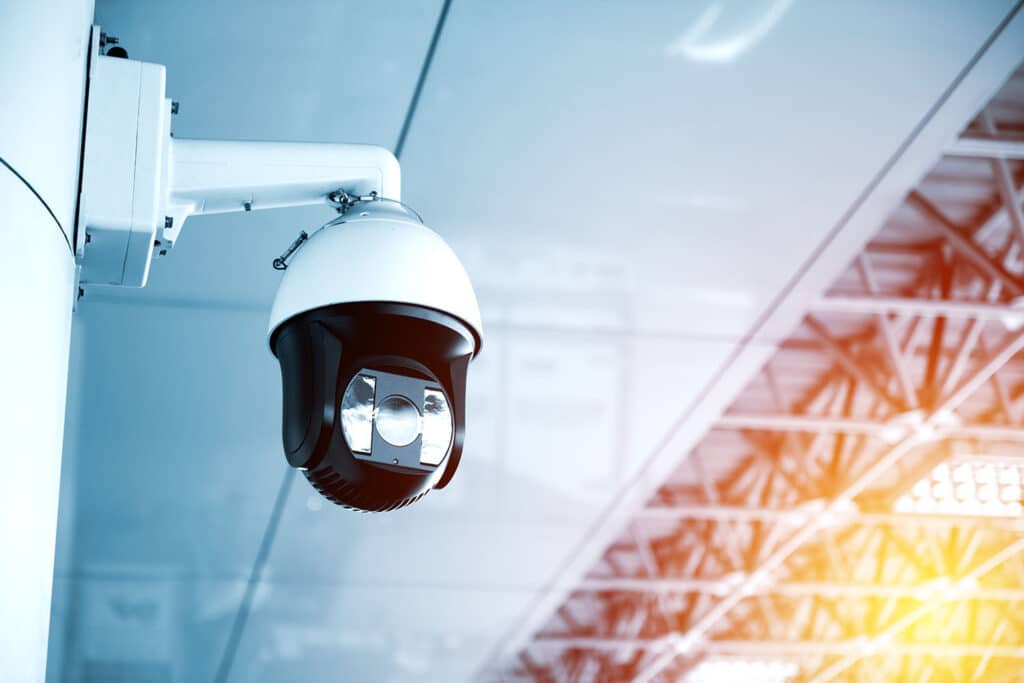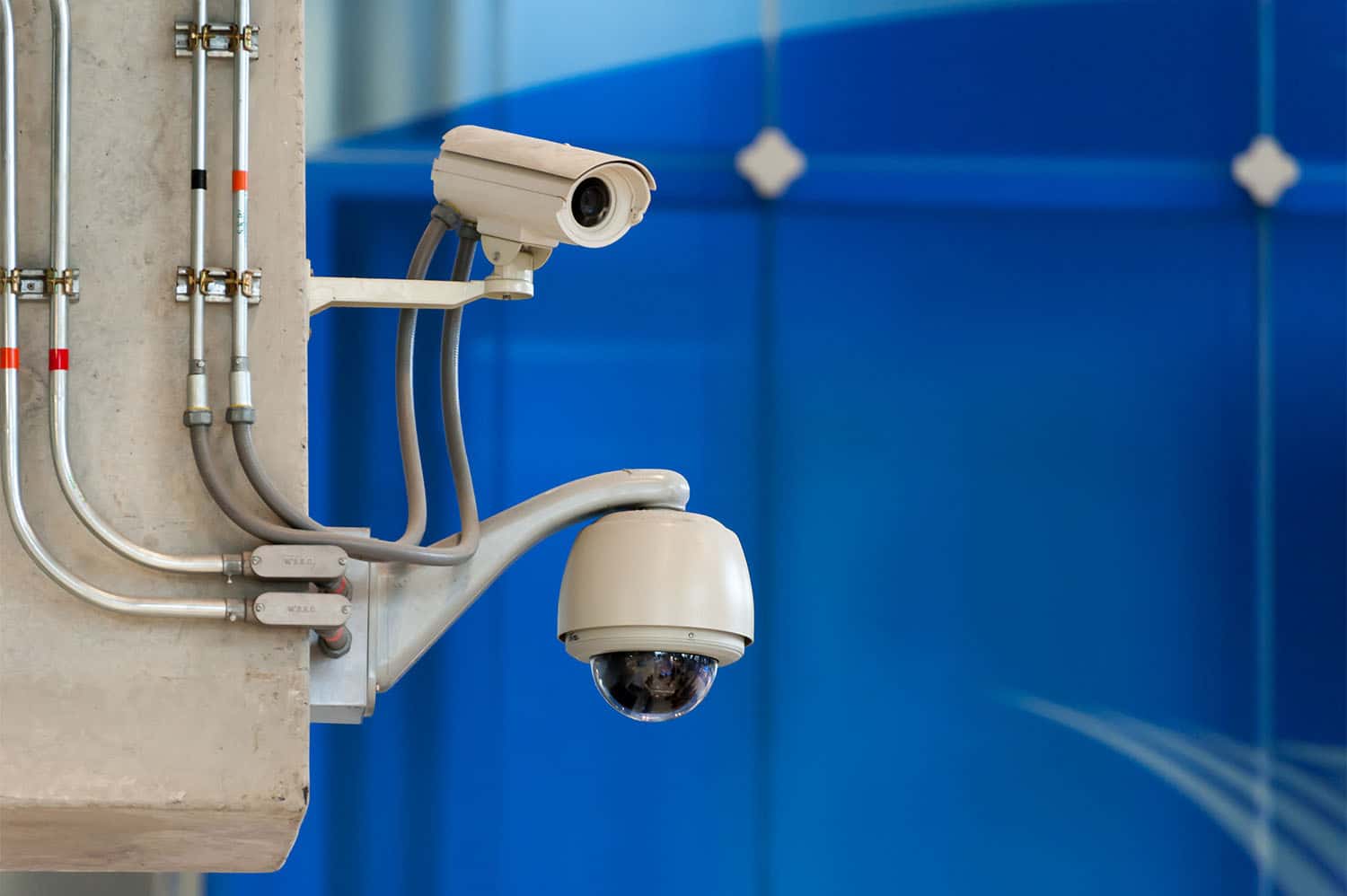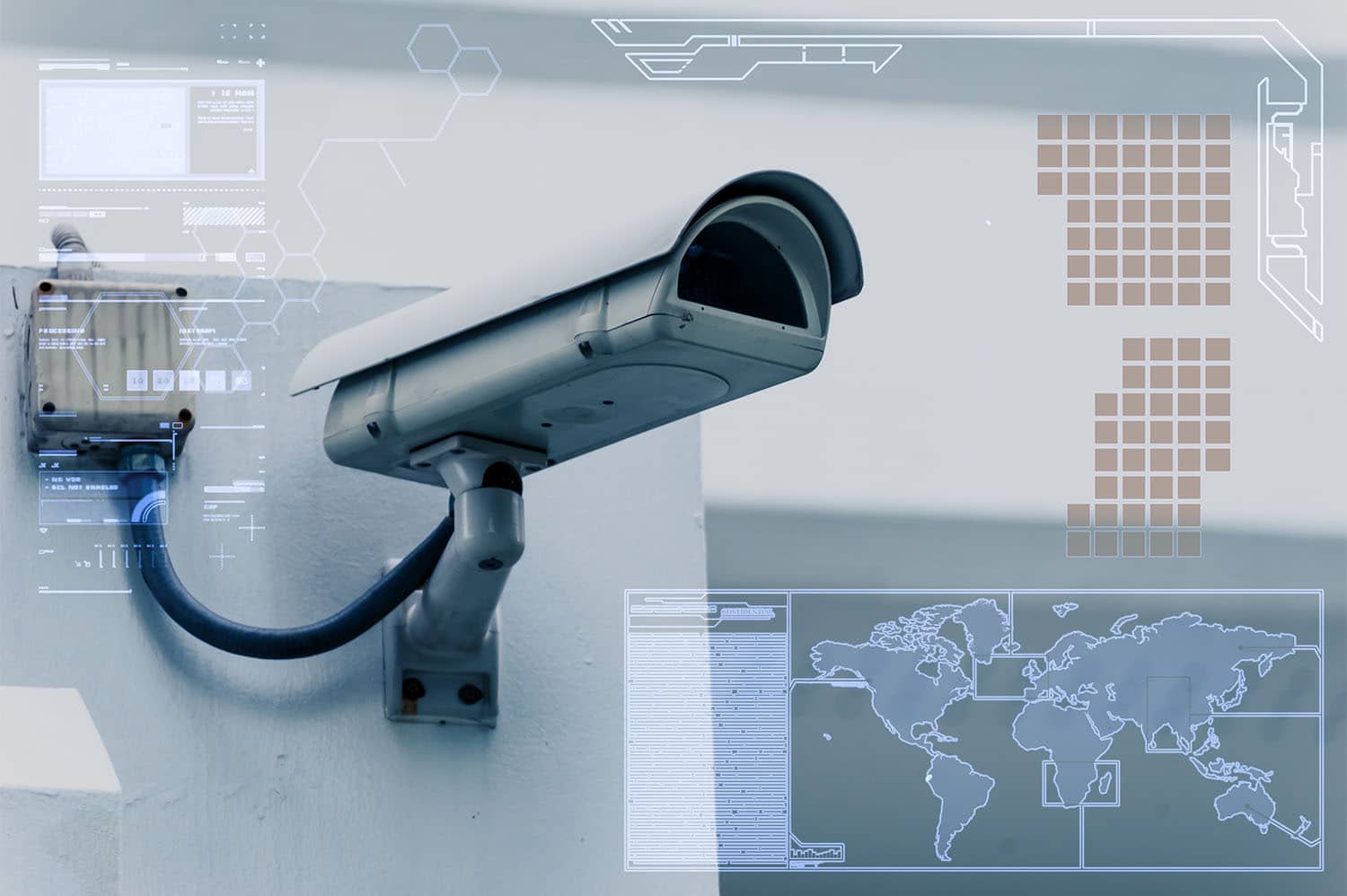Choosing the right video recording system for your security setup isn’t just about picking the newest tech or the cheapest option. It’s about aligning your infrastructure with your security goals. This is the root of the NVR vs. DVR debate when it comes to commercial video surveillance.
Both Network Video Recorders (NVRs) and Digital Video Recorders (DVRs) serve the same core purpose: storing and managing footage from surveillance cameras. But how they do it, what they support, and where your footage ultimately lives — on-prem or in the cloud — differs significantly.
DVR systems tend to rely on analog cameras and coaxial cabling, with footage recorded and stored locally on the device. NVR systems, on the other hand, work with IP cameras and transmit video over the network, allowing for more advanced features and easier cloud integration.
So, should your surveillance footage stay grounded in a physical unit on-site, or should it fly to the cloud? That depends on the size of your operation, your bandwidth, and how responsive you need your security to be. In this blog, we’ll dissect the NVR vs. DVR conversation from cost to compatibility — and help you make the right call.
What’s the Difference Between NVR and DVR?
At a glance, the NVR vs. DVR conversation might seem like a simple matter of digital versus networked. But the differences go deeper, especially when you’re dealing with outdoor commercial surveillance, where coverage quality, reliability, and ease of access all matter.
A DVR (Digital Video Recorder) is the older of the two technologies. It’s designed to work with analog security cameras, which send raw video signals over coaxial cables. The DVR encodes and processes this footage locally, typically storing it on a hard drive inside the recorder itself. While this setup is often more affordable upfront, it comes with trade-offs like limited resolution, more complex wiring, and less flexibility when scaling up or integrating with remote monitoring tools.
NVRs (Network Video Recorders), by contrast, are purpose-built for IP cameras that digitize video at the source. These cameras connect via Ethernet, Wi-Fi, or even cellular networks, and the NVR collects the already-processed data. This allows for:
-
Higher resolution footage (often 4K or better)
-
Simplified cabling (using Power over Ethernet)
-
Remote access and cloud-based storage options
That last point is where the NVR vs. DVR question gets particularly interesting. While DVRs are almost always tied to an on-premises setup, NVRs open the door to hybrid or fully cloud-based surveillance, which brings its own set of advantages and concerns. Think construction sites, vehicle lots, or critical infrastructure locations where real-time response matters. Being able to stream footage securely to a monitoring center or authorized mobile devices can change the game — something DVRs aren’t built to handle.
Still, cloud convenience isn’t without cost. Bandwidth, data security, and ongoing subscription fees all factor in.
Let’s weigh those trade-offs so you can see how each system stacks up in real-world scenarios.
NVR vs. DVR: Cloud Flexibility or On-Prem Control?
When deciding between an NVR and a DVR system, the real question isn’t just about tech specs; it’s about how your security needs align with where your footage should live. Cloud-based setups offer flexibility and access, but on-prem storage can provide simplicity, cost control, and insulation from connectivity issues.
Here’s how the two compare across several key areas:
NVR vs. DVR Feature Comparison
- Camera Type
- DVR: Analog (typically lower resolution)
- NVR: IP (higher resolution, smart features)
- Cabling
- DVR: Coaxial cables (plus power cords)
- NVR: Ethernet with PoE (simplified wiring)
- Video Processing
- DVR: Handled by the recorder
- NVR: Handled by the camera itself
- Remote Access
- DVR: Limited or requires extra setup
- NVR: Built-in or cloud-enabled by design
- Scalability
- DVR: Harder to expand; wiring is complex
- NVR: Easier to scale across large sites
- Cloud Integration
- DVR: Rare and often clunky
- NVR: Seamless with most modern platforms
- Footage Quality
- DVR: Lower resolution and fewer frame rate options
- NVR: Higher clarity, motion detection, night vision support
- Cost
- DVR: Lower upfront, fewer ongoing fees
- NVR: Higher initial cost, potential for cloud subscription fees
For smaller, static installations like a single storefront or garage, a DVR might still make sense. But for multi-location monitoring, high-risk assets, or environments that need mobile alerts and real-time intervention, NVRs win out — especially when paired with services like Pro-Vigil’s virtual guard monitoring.
When Cloud-Based Surveillance Makes Sense (and When It Doesn’t)
Cloud-enabled video surveillance, typically powered by NVRs, adds a layer of agility and responsiveness that traditional DVR systems can’t match. For businesses that need offsite monitoring, instant alerts, or remote access to multiple camera feeds, the cloud can be a game-changer.
But it’s not always the right fit.
If your site has reliable internet access and security personnel who need to check in from anywhere, then cloud storage offers major benefits. You can:
-
View footage in real time from a phone, tablet, or laptop
-
Store weeks (or months) of high-resolution video without relying on physical drives
-
Enable smart alerts, like motion detection or zone-based intrusion warnings
-
Seamlessly integrate with live monitoring services, like Pro-Vigil’s trained virtual guards
-
Offload IT headaches, since most cloud-based systems handle updates and maintenance remotely
On the other hand, bandwidth limitations can become a real bottleneck. If you’re dealing with remote construction sites or areas with inconsistent connectivity, uploading large video files to the cloud may be unreliable or slow. In these cases, an on-premise DVR, or a hybrid NVR with both local and cloud storage, could be the safer bet.
There are also regulatory and privacy considerations. Some industries and jurisdictions may require footage to remain on-site or follow strict access controls. In those cases, even a modern NVR system may need to operate primarily offline.
Ultimately, the NVR vs. DVR decision comes down to your priorities: accessibility vs. control, flexibility vs. simplicity, long-term scalability vs. lower short-term cost. Understanding how and where your footage is stored is just as important as the cameras you install — and it can directly impact how quickly you respond when a real security threat appears.
Final Verdict: NVR vs. DVR (and the Pro-Vigil Difference)
There’s no one-size-fits-all answer in the NVR vs. DVR debate. If you’re working with a small, fixed site and need a budget-friendly, no-frills setup, DVR might be sufficient. But if your business depends on real-time awareness, higher-quality footage, and the ability to scale or adapt quickly, NVR systems, especially those with cloud capabilities, are the clear winner.
That’s where Pro-Vigil comes in.
We don’t just install cameras; we turn them into active security tools. Our cloud-enabled systems are bolstered by our live virtual guard services, where trained professionals monitor your property in real time, respond to threats, and prevent incidents before they escalate. Whether you’re securing a construction site, a dealership, or a storage yard, we make sure your investment in surveillance actually works to protect your bottom line.
With Pro-Vigil, you get:
-
Expert guidance on surveillance system setup — including NVR vs. DVR — for your unique environment
-
Cameras and infrastructure optimized for cloud-based monitoring
-
24/7 live surveillance by experienced virtual guards
-
Rapid deployment, easy scalability, and nationwide support










